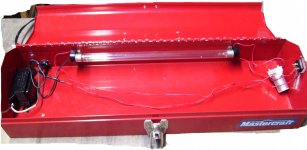k2x4b524[
Veteran Member
Not sure which one to post this one, so it is going in vintage for the following reasons
The chips in question have the little windows for erasure
Some of the chips are 8k varieties.
I am looking to craft a UV erasure light for the chips. I have several UV LED's @ 3.6 volt. Is that enough to erase the chips? The LED looks like it's a black-light LED, Am i able to do this right with the LED's or do i need to track down an actual light?
The chips in question have the little windows for erasure
Some of the chips are 8k varieties.
I am looking to craft a UV erasure light for the chips. I have several UV LED's @ 3.6 volt. Is that enough to erase the chips? The LED looks like it's a black-light LED, Am i able to do this right with the LED's or do i need to track down an actual light?

